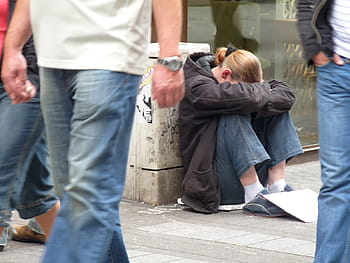By Mikayla Balmaceda/El Inde
When it comes to homelessness, there is a very specific image people tend to think of: They imagine a man or woman in their 30s or 40s, maybe bundled up in mismatching layers, maybe pushing a shopping cart of stuff on the side of the road with a cardboard sign asking for help.
But what about homeless youth?
People do not typically see young people who happen to be homeless because they are more difficult to recognize. Youth homelessness is a lot more subtle and undetectable because of this stereotype that is carried throughout society. These are young people who are still trying to go about their daily lives just the same as before they lost their homes. Homelessness has no physical way of manifesting itself.
They may or may not look a certain way, but what sets them apart is they no longer receive any type of financial assistance from their parents.
They may have a roof over their head, provided by a distant relative or friend, but they can also be hopping from one couch to the next. They do not have a consistent home. They do not have a consistent stream of food or money.

During the 2016 to 2017 school year, there were an estimated 24,770 public school students experiencing homelessness throughout the state of Arizona, according to data reported to the United States Department of Education. Throughout Pima County alone, there are about 5,600 homeless students, as of the school year ending spring 2020.
Katrina Calderon, the marketing outreach manager for Youth on Their Own (YOTO), a dropout prevention organization for homeless youth, said that not every homeless youth is going to take a survey and be honest about their circumstances.
“Because they’re afraid,” Calderon said. “They don’t want to be put into the system. And so, you know, it’s not discussed too much, but it’s not because they don’t want to talk about it. It’s because, again, not everybody has the correct facts.”
YOTO works to help break down the barriers and obstacles faced by these youth, from the 6th through the 12th grade.
In order for the state of Arizona to get a more realistic picture of the youth homeless population, young people would have to respond honestly to a survey, revealing whether there is abuse at home or whether they or their parents are using drugs. “And that is typically not going to happen,” Calderon said.
According to Youth on Their Own’s data, homeless youth are also four times more likely to drop out of school because education stops being their first priority.
Imagine waking up every day not knowing where you’re going to sleep that night. Having to go about your day, without knowing what is going to happen next or where your next meal is going to come from. Imagine having to gather what little belongings you have and set them aside to bring to the next destination; not knowing how you’re even going to get from one place to the next, wondering how you can earn some quick cash to make ends meet.
Imagine the weight that all of these worries carry, especially on a young person still trying to focus on school, like Jesus Valenzuela.
Both of Valenzuela’s parents were deported when he was in middle school. This left Valenzuela venturing off into different households for a couple of years, separating himself from his brothers and sisters.
“Things were just really sporadic and chaotic,” he said.
Valenzuela found YOTO towards the end of his freshman year of high school at Desert High School, with help from his English teacher.
“Just connecting with people is difficult in and of itself because I couldn’t do a lot of the things that I felt like were normal to do back in high school, like bringing friends home,” Valenzuela said. “I didn’t understand the complexity of bringing someone home, the financial implications that that may bring, because I just did not have the resources to feed myself.”
Located off of North Alvernon Way, Youth on Their Own consists of two two-story yellow buildings. One of them offers the students the Mini Mall, set up like a convenience store where students can pick and choose from donated basic human items such as clothing, food, hygiene items, and school supplies. This is also where there is a room set up for students to receive guidance.
They accomplish their mission in three ways: since the beginning of this year, they provide a monthly stipend of up to $160 for those students who go to school and get good grades. They also provide them with basic human needs, such as hygiene products and food. And finally, they give students guidance.
“There was definitely a void there of confidence and knowing I was going to be something,” Valenzuela said.
“If you’re saying you want to graduate from high school, and you just need a little bit of help … when you don’t have a parent there helping you pay for utilities or gas to go to and from someplace or getting a bus, that’s where YOTO comes in,” Calderon said.
This fiscal year, YOTO is serving about 2,050 homeless youth throughout Pima County. Their graduation rate from last school year was 84%.
Through the help of YOTO alongside his teachers and counselors, Valenzuela was able to graduate high school. Today, he’s a junior at the University of Arizona, majoring in communications.
